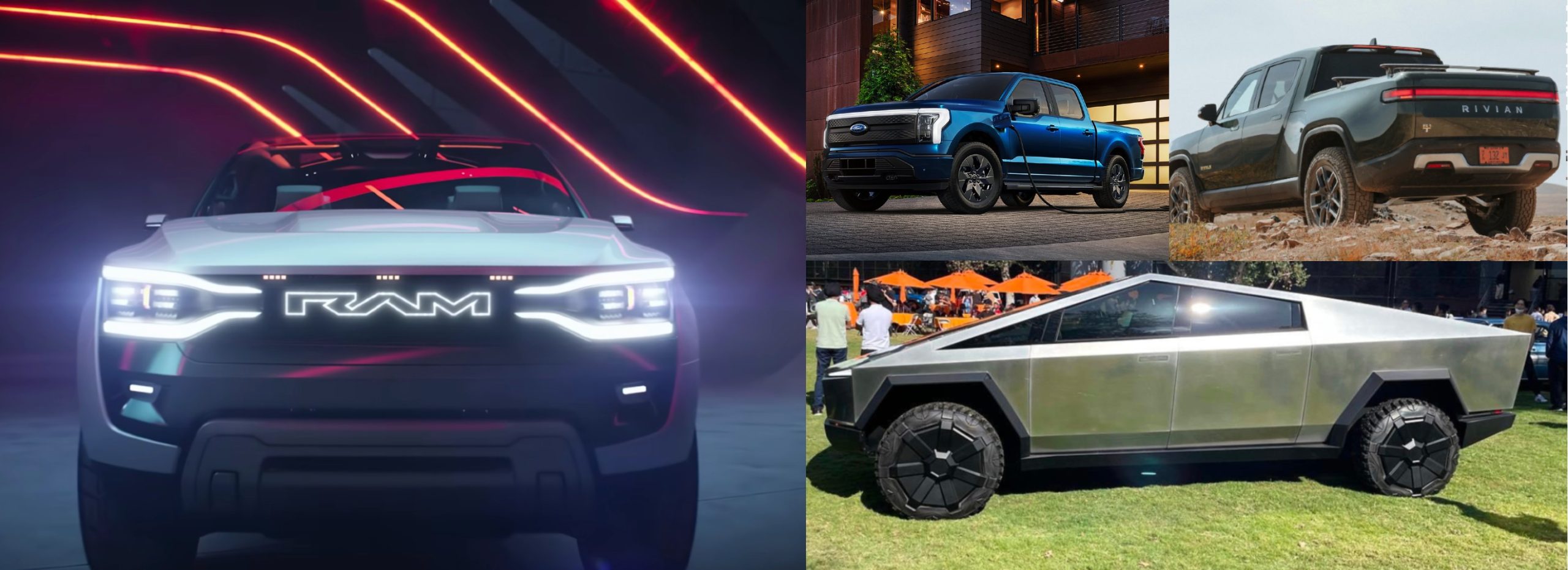
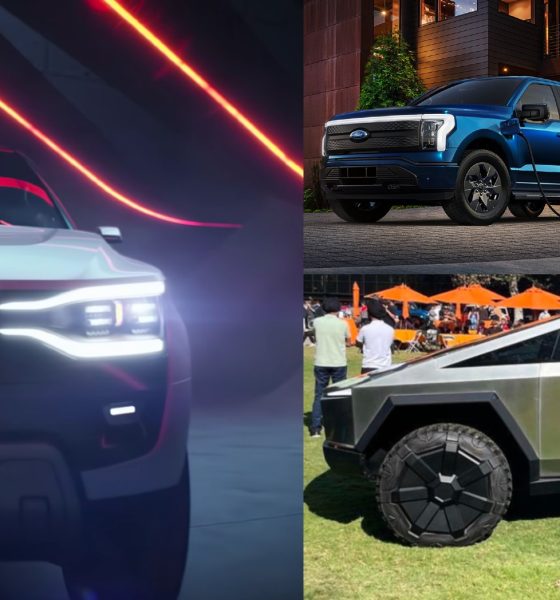
News
Stellantis RAM 1500 Revolution vs Tesla Cybertruck, Rivian R1T & the Ford F-150 Lightning
Stellantis’ Ram Truck brand revealed its RAM 1500 Revolution battery electric vehicle concept during CES 2023 in Las Vegas. The all-electric RAM pickup has already generated some buzz in the market for its exciting features and next-gen design. With the growing electrified pickup truck market, RAM has developed a strong contender with the 1500 Revolution BEV.
RAM 1500 Revolution BEV Details
The RAM 1500 Revolution BEV will be built on Stellantis’ STLA Frame EV platform, designed to deliver a range of up to 500 miles (800 km). Unlike other STLA platforms—which are unibody—the STLA Frame platform is a body-on-frame. In the past, Stellantis planned to use 2 battery cell chemistries to ensure affordability in its electric vehicles. The company will have to carefully consider the RAM 1500 Revolution’s starting price if it wants the pickup to qualify for tax incentives under the Inflation Reduction Act.
The electrified RAM 1500 Revolution concept includes some nifty tech innovations, including digital side-view mirrors. The rearview mirror alone is packed with tech, like a smart backup camera with 360-degree views, plus speakers and receivers compatible with voice assistants like Alexa and Siri. The review mirror is connected to biometric cameras, which observe the RAM 1500 Revolution’s surrounding environment.
With its EV pickup concept, RAM plans to take advantage of the most useful tech innovations on the market. For instance, the biometric cameras appear connected to the EV pickup truck’s biometric identity recognition and two-factor authentication. The RAM 1500 BEV also utilizes augmented reality (AR) for a see-through heads-up display (HUD). Other features RAM plans for the 1500 Revolution BEV are Shadow Mode and an exterior projector.

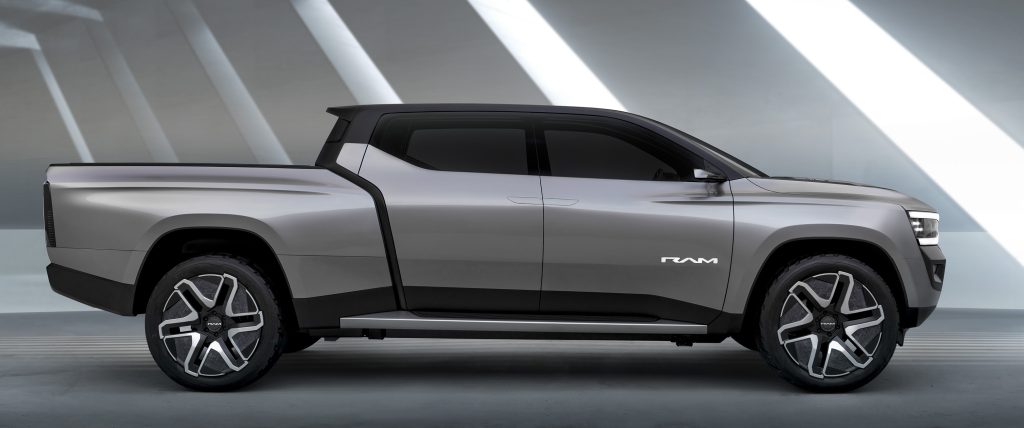
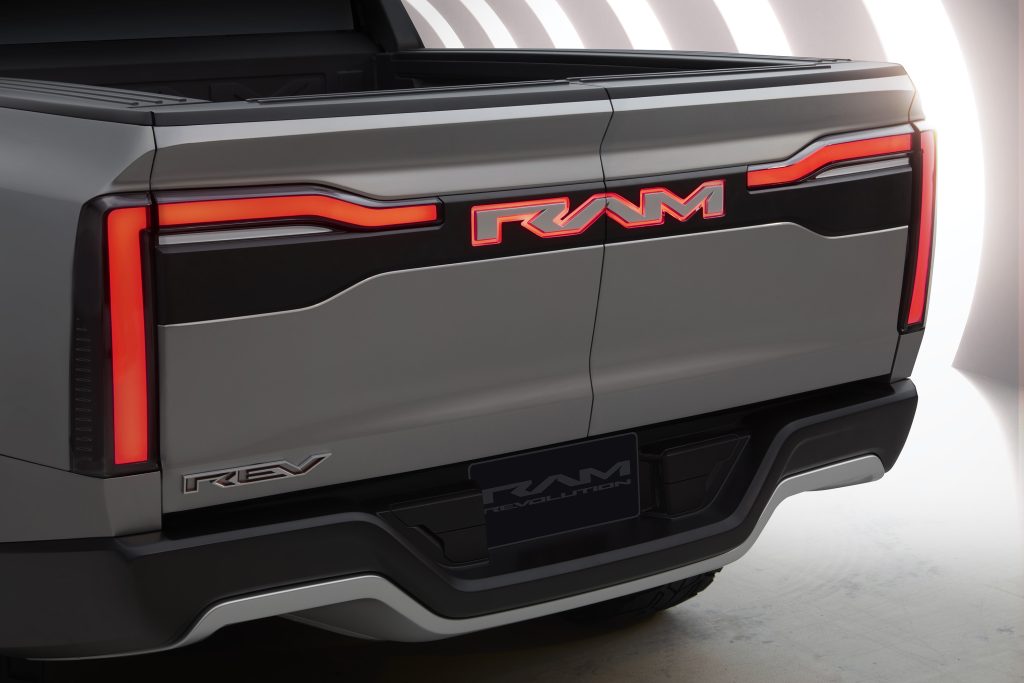

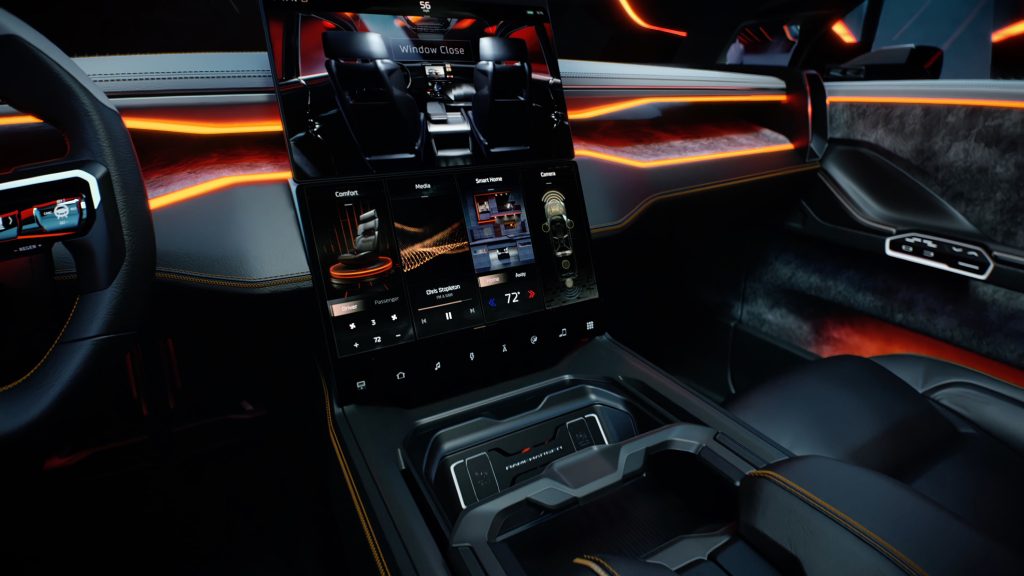
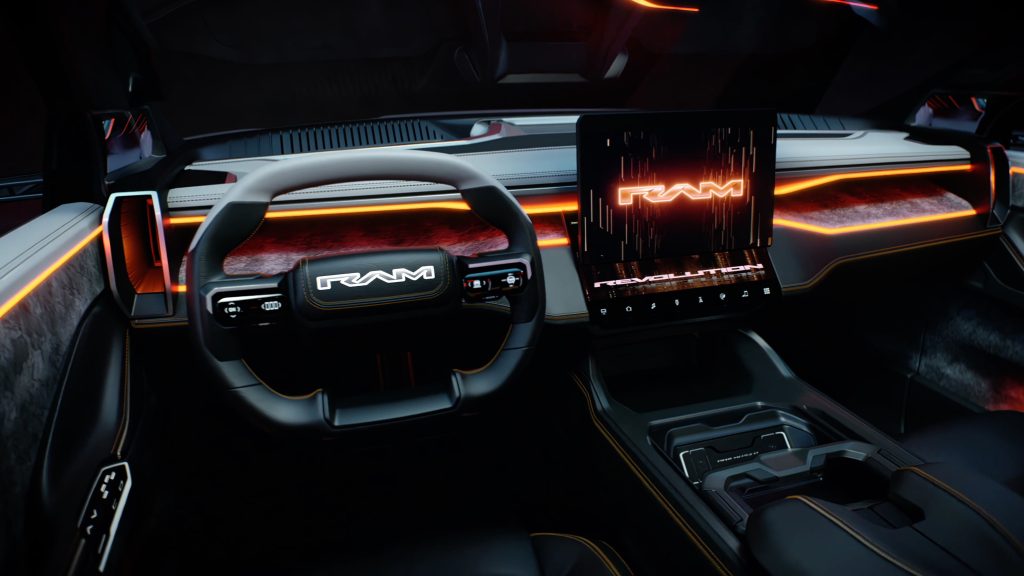
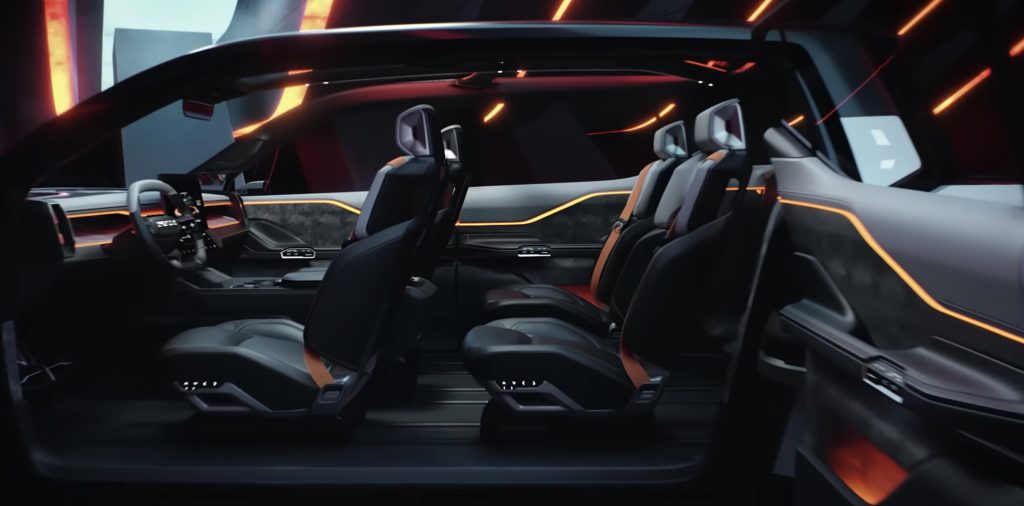
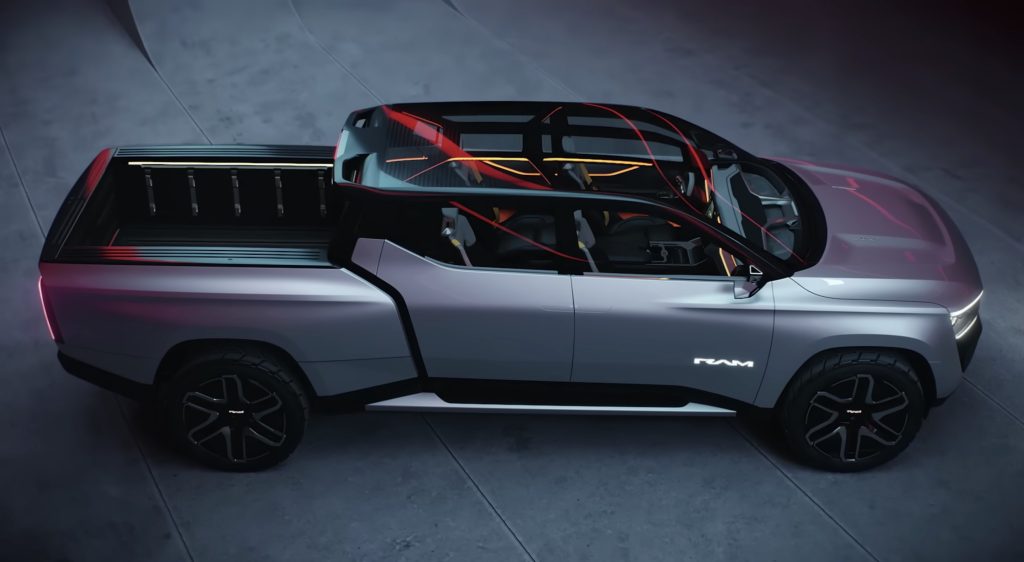
RAM vs. Tesla Cybertruck, Rivian R1T & the Ford F-150 Lightning
RAM aims to redefine the pickup truck segment, demonstrating its position in the EV pickup truck market along the way. It is one of North America’s top pickup truck brands, alongside Ford and Chevrolet. The Ram pickup, Ford F-Series pickup, and Chevy Silverado have long held the top three positions in the pickup truck market in the United States. Still, the advent of electric vehicles has opened up the pickup segment to other legacy competitors and EV startups.
Tesla Cybertruck
Tesla unveiled its Cybertruck concept in 2019 and has yet to deliver the futuristic pickup truck. However, Giga Texas has started preparing for Cybertruck production in 2023. Tesla plans to deliver its first batch of Cybertruck units to customers this year.
When the electric truck concept was first revealed, it generated a lot of buzz for its unique design and technology. But other EV trucks have started selling on the market since 2019, so Tesla has improved the Cybertruck’s design and introduced up-to-date technology to the pickup truck. Due to the Cybertruck’s design changes, its prices might also change.
“I worry more about like how do we the Cybertruck affordable despite having awesome technology. That’s the thing that will really set the rate,” Elon Musk said back in the Q4 2021 earnings call.
Rivian R1T
The Rivian R1T has generated some buzz of its own since hitting the market. Rivian’s electric pickup truck appeals to a niche customer base who live for adventure and fun. Rivian literally threw everything into the R1T that an explorer would need—including the kitchen sink.
In preparation for 2023, Rivian has tweaked its R1T configuration options. For instance, the Rivian R1T Quad-Motor with Max battery pack is unavailable this year. However, the company strives to improve its vehicle. Last month, Rivian announced that the 2023 R1T with 21-inch wheels received the highest EPA range estimate for an electric truck in the market.
Ford F-150 Lightning
If Rivian was made for fun and adventure, Ford designed the F-150 Lightning for heavy-duty work. Ford’s all-electric pickup won Motor Trend’s 2023 Pickup Truck of the Year. It was the first electric pickup to win the award with a unanimous vote from the judges.
Ford is steadily ramping up F-150 Lightning production at its Dearborn Truck Plant and Rouge Electric Vehicle Center in Michigan. The legacy automaker initially targeted an annual manufacturing capacity of 40,000 units for the F-150 Lightning. However, demand for the electric pickup seems to be strong since Ford doubled its manufacturing capacity for the Lightning to 80,000 vehicles annually by 2024.
With the RAM 1500 Revolution, Rivian R1T, Ford F-150 Lightning, and Tesla Cybertruck, the electric pickup truck market is starting to take shape. More competitors are likely to come in the future—like Volkswagen’s Scout pickup—making the EV pickup truck market something to watch in the coming years.
The Teslarati team would appreciate hearing from you. If you have any tips, contact me at maria@teslarati.com or via Twitter @Writer_01001101.

News
Tesla Robotaxi Safety Monitor seems to doze off during Bay Area ride
We won’t try to blame the camera person for the incident, because it clearly is not their fault. But it seems somewhat interesting that they did not try to wake the driver up and potentially contact Tesla immediately to alert them of the situation.
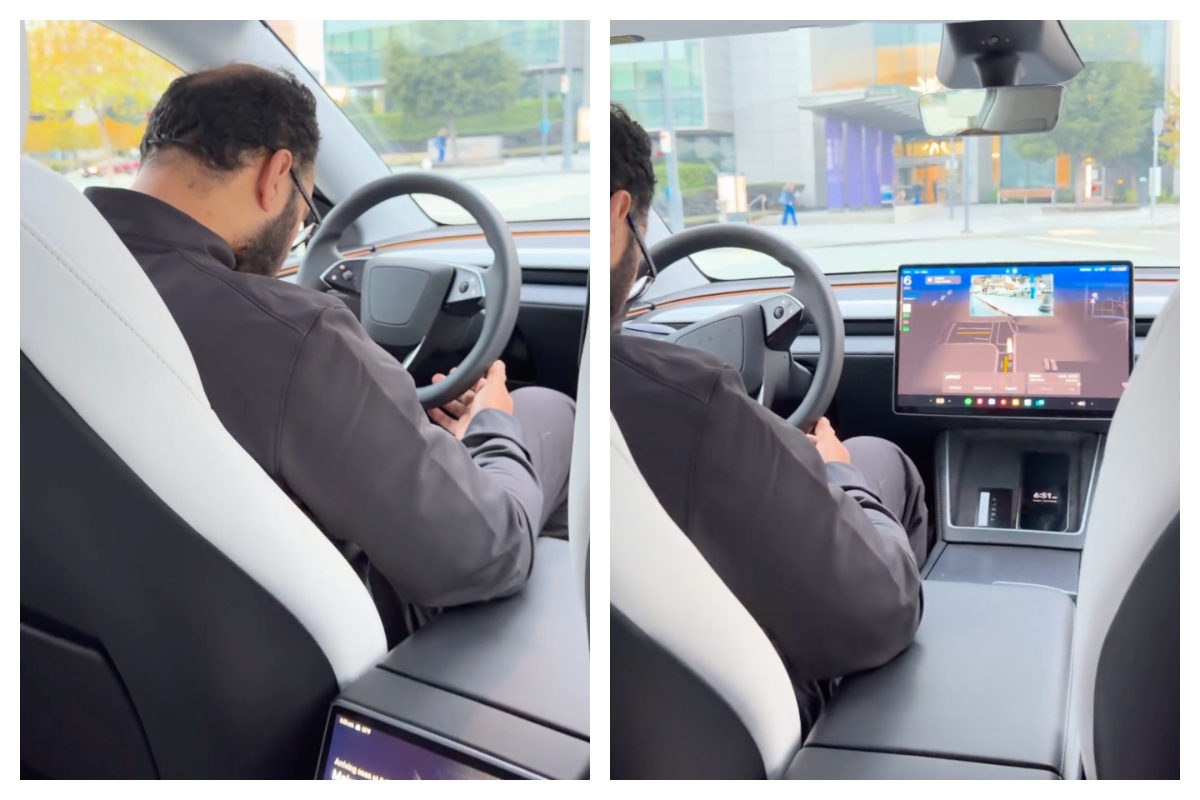
A Tesla Robotaxi Safety Monitor appeared to doze off during a ride in the California Bay Area, almost ironically proving the need for autonomous vehicles.
The instance was captured on camera and posted to Reddit in the r/sanfrancisco subreddit by u/ohmichael. They wrote that they have used Tesla’s ride-hailing service in the Bay Area in the past and had pleasant experiences.
However, this one was slightly different. They wrote:
“I took a Tesla Robotaxi in SF just over a week ago. I have used the service a few times before and it has always been great. I actually felt safer than in a regular rideshare.
This time was different. The safety driver literally fell asleep at least three times during the ride. Each time the car’s pay attention safety alert went off and the beeping is what woke him back up.
I reported it through the app to the Robotaxi support team and told them I had videos, but I never got a response.
I held off on posting anything because I wanted to give Tesla a chance to respond privately. It has been more than a week now and this feels like a serious issue for other riders too.
Has anyone else seen this happen?”
My Tesla Robotaxi “safety” driver fell asleep
byu/ohmichael insanfrancisco
The driver eventually woke up after prompts from the vehicle, but it is pretty alarming to see someone like this while they’re ultimately responsible for what happens with the ride.
We won’t try to blame the camera person for the incident, because it clearly is not their fault. But it seems somewhat interesting that they did not try to wake the driver up and potentially contact Tesla immediately to alert them of the situation.
They should have probably left the vehicle immediately.
Tesla’s ride-hailing service in the Bay Area differs from the one that is currently active in Austin, Texas, due to local regulations. In Austin, there is no Safety Monitor in the driver’s seat unless the route requires the highway.
Tesla plans to remove the Safety Monitors in Austin by the end of the year.
News
Tesla opens Robotaxi access to everyone — but there’s one catch

Tesla has officially opened Robotaxi access to everyone and everyone, but there is one catch: you have to have an iPhone.
Tesla’s Robotaxi service in Austin and its ride-hailing service in the Bay Area were both officially launched to the public today, giving anyone using the iOS platform the ability to simply download the app and utilize it for a ride in either of those locations.
It has been in operation for several months: it launched in Austin in late June and in the Bay Area about a month later. In Austin, there is nobody in the driver’s seat unless the route takes you on the freeway.
In the Bay Area, there is someone in the driver’s seat at all times.
The platform was initially launched to those who were specifically invited to Austin to try it out.
Tesla confirms Robotaxi is heading to five new cities in the U.S.
Slowly, Tesla launched the platform to more people, hoping to expand the number of rides and get more valuable data on its performance in both regions to help local regulatory agencies relax some of the constraints that were placed on it.
Additionally, Tesla had its own in-house restrictions, like the presence of Safety Monitors in the vehicles. However, CEO Elon Musk has maintained that these monitors were present for safety reasons specifically, but revealed the plan was to remove them by the end of the year.
Now, Tesla is opening up Robotaxi to anyone who wants to try it, as many people reported today that they were able to access the app and immediately fetch a ride if they were in the area.
We also confirmed it ourselves, as it was shown that we could grab a ride in the Bay Area if we wanted to:
🚨 Tesla Robotaxi ride-hailing Service in Austin and the Bay Area has opened up for anyone on iOS
Go download the app and, if you’re in the area, hail a ride from Robotaxi pic.twitter.com/1CgzG0xk1J
— TESLARATI (@Teslarati) November 18, 2025
The launch of a more public Robotaxi network that allows anyone to access it seems to be a serious move of confidence by Tesla, as it is no longer confining the service to influencers who are handpicked by the company.
In the coming weeks, we expect Tesla to then rid these vehicles of the Safety Monitors as Musk predicted. If it can come through on that by the end of the year, the six-month period where Tesla went from launching Robotaxi to enabling driverless rides is incredibly impressive.
News
Tesla analyst sees Full Self-Driving adoption rates skyrocketing: here’s why
“You’ll see increased adoption as people are exposed to it. I’ve been behind the wheel of several of these and the different iterations of FSD, and it is getting better and better. It’s something when people experience it, they will be much more comfortable utilizing FSD and paying for it.”

Tesla analyst Stephen Gengaro of Stifel sees Full Self-Driving adoption rates skyrocketing, and he believes more and more people will commit to paying for the full suite or the subscription service after they try it.
Full Self-Driving is Tesla’s Level 2 advanced driver assistance suite (ADAS), and is one of the most robust on the market. Over time, the suite gets better as the company accumulates data from every mile driven by its fleet of vehicles, which has swelled to over five million cars sold.
The suite features a variety of advanced driving techniques that many others cannot do. It is not your typical Traffic-Aware Cruise Control (TACC) and Lane Keeping ADAS system. Instead, it can handle nearly every possible driving scenario out there.
It still requires the driver to pay attention and ultimately assume responsibility for the vehicle, but their hands are not required to be on the steering wheel.
It is overwhelmingly impressive, and as a personal user of the FSD suite on a daily basis, I have my complaints, but overall, there are very few things it does incorrectly.
Tesla Full Self-Driving (Supervised) v14.1.7 real-world drive and review
Gengaro, who increased his Tesla price target to $508 yesterday, said in an interview with CNBC that adoption rates of FSD will increase over the coming years as more people try it for themselves.
At first, it is tough to feel comfortable with your car literally driving you around. Then, it becomes second nature.
Gengaro said:
“You’ll see increased adoption as people are exposed to it. I’ve been behind the wheel of several of these and the different iterations of FSD, and it is getting better and better. It’s something when people experience it, they will be much more comfortable utilizing FSD and paying for it.”
Tesla Full Self-Driving take rates also have to increase as part of CEO Elon Musk’s recently approved compensation package, as one tranche requires ten million active subscriptions in order to win that portion of the package.
The company also said in the Q3 2025 Earnings Call in October that only 12 percent of the current ownership fleet are paid customers of Full Self-Driving, something the company wants to increase considerably moving forward.








